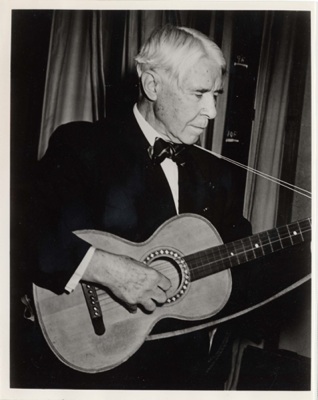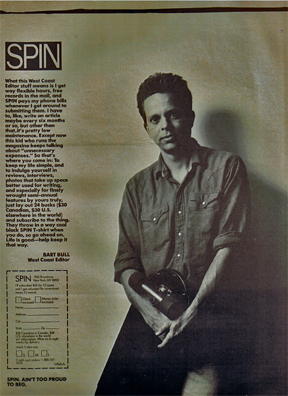Carl Sandburg, once neck and neck with Hemingway as America’s most famous writer (while unequivocally winning the droopy unpaid laurel of “America’s Most Famous Living Poet,” Non-Academic Division), has long since been given the unceremonious heave-ho from any and all AmLit surveys, defenestrated from the Pantheon’s upper deck, his literary stock sent plummeting like a brawny-shouldered Illinois anvil shoved sidelong off the once-and-former Sears Tower skydeck. But Sandburg was back in those days considered — and especially on the Left — as America’s Poet, probably the most widely known American literary figure since Mark Twain. Sandburg had lived the type of life that would later become a standard joke, the fabled Proletarian Novelist’s Pedigree, practically a literary genre all on its own. (And one which as much as anything was inspired and shaped by Sandburg’s chronicling of the Great Rail-Splitter’s own homespun linsey-woolsey checkered past.) Child of Swedish immigrants, an illiterate blacksmith father and a mother who loved books, he had been a porter, a shoeshine boy, a kid with a milk route, a short-order cook, a hobo who did ten days on vagrancy charges, a dishwasher, a harvest hand, a house painter, a volunteer in the Sixth Illinois Regiment of State Militia when the time came to drive the foul Spaniard from Guantanamo Bay, a Socialist labor organizer, a salesman, a newspaper reporter, a poet (whose hog-butchering poem “Chicago,” actually won a $200 prize in 1914, a mark that may not yet have been eclipsed when you consider what $200 bought then, and what poetry in print pays then or ever), a pro folksinger and published folk song collector, and finally, as he would be best known from 1925 on, as the biographer Abraham Lincoln might have wished upon himself.
Sandburg had lived the type of life that would later become a standard joke, the fabled Proletarian Novelist’s Pedigree, practically a literary genre all on its own. (And one which as much as anything was inspired and shaped by Sandburg’s chronicling of the Great Rail-Splitter’s own homespun linsey-woolsey checkered past.) Child of Swedish immigrants, an illiterate blacksmith father and a mother who loved books, he had been a porter, a shoeshine boy, a kid with a milk route, a short-order cook, a hobo who did ten days on vagrancy charges, a dishwasher, a harvest hand, a house painter, a volunteer in the Sixth Illinois Regiment of State Militia when the time came to drive the foul Spaniard from Guantanamo Bay, a Socialist labor organizer, a salesman, a newspaper reporter, a poet (whose hog-butchering poem “Chicago,” actually won a $200 prize in 1914, a mark that may not yet have been eclipsed when you consider what $200 bought then, and what poetry in print pays then or ever), a pro folksinger and published folk song collector, and finally, as he would be best known from 1925 on, as the biographer Abraham Lincoln might have wished upon himself.
But Sandburg was beyond all this, because like it or not, he was actually a poet, and a great one, though a great one of sorts. At his worst, he was too direct, too maudlin, and plainspoken to a severe fault. These were his strengths as well, because he was determined to speak directly, a reporter-poet ready to risk the emotion raised by the drama of daily life observed closely, and he was especially determined to talk in his poetry rather than declaim, to talk, to talk as an American, to risk missing the arch tone of the poet if he could achieve the poetry of a joke made at lunchbreak. A committed Socialist, he was determined to trouble the political waters, but he was at least as determined to locate poetry in the land he’d surveyed around him, the same land young Abe had surveyed as frontier. It’s a pretty tough row to hoe, this political poetry jazz, and he missed more often than he hit. It was a batting average to be proud of.
Sandburg’s Lincoln biography, begun as “a book for young people,” bloomed beyond that but maintaining a certain intended sweetness at heart, was in its day considered to be one of the great literary works of America. “A Lincoln whom no other man than Carl Sandburg could have given us,” said Mark Van Doren; “A monument that will stand forever,” wrote Robert E. Sherwood, and the New York Times reviewed it as, flatly, “...the best biography of our day.” The very few nay-sayers it ever gathered derided it as a hagiography but it was less A Life of the Saint than A Life of the Christ. The Prairie Years, published in two volumes in 1926, and originally titled simply “Abraham Lincoln,” had more of its juvenile origin in its genetic code, but after its great popular, critical, and financial and public success, Sandburg spent much of the next thirteen years working on the four volumes that would be The War Years, with their unavoidably darker vision. It was the Prairie Lincoln, though, — railsplitting rockabilly Abe, the Young Elvis, not the bearded Las Vegas President Lincoln — that was everywhere in the Popular Front years. Sherwood’s own play “Abe Lincoln in Illinois” won the Pulitzer Prize in 1938, and was dutifully turned into a dull Hollywood movie in 1940, lagging behind John Ford’s 1939 Young Mr. Lincoln.
The book that followed on the heels of The Prairie Years, was a pioneering collection of songs, The American Songbag. Sandburg had always closed his poetry readings and lectures on Socialism with a few songs played on guitar, and on some nights members of his audience taught him new ones before the evening was ended. He described his collection as “ 280 songs, ballads, ditties, brought together from all regions of America.” He went on to declare the songs’ sources, commencing with “That notable distinctive American institution, the black-face minstrel...” and he spoke of railroad, hobo, work-gang, steamboat songs. He mentioned Mexican border songs before he touched on the lumberjacks, loggers and shanty boys, and even before bringing up the ballads of the southern mountains or the Negro spiritual. He was on the seventh paragraph of his introduction before he mentioned something called “folk songs.”
There had been collections of American songs before this one, and he pointedly acknowledged a number of the most recent ones. He suggested the songs be sung any way you could manage, and — listen; take note; pay attention here and now — he didn’t end up owning any of the copyrights. He didn’t claim any of copyrights. He didn’t get into any of the legal squabbles that the other folksong collectors who followed did whenever some tune they knew got on the radio, and the pennies began to pile up in somebody else’s account, even though they all knew they hadn’t ever written it. He proved that it was possible to print a folk song collection and not gut the wallet of any folk too dumb or dead or poor or stupid to have heard what a lawyer might do.
(excerpt from a forthcoming work)
Sunday, April 5, 2009
Carl Sandburg Proves You Can Do Folk Music And Not Be A Thief
Posted by
Nasrudin
at
6:24 PM
0
comments
![]()
Subscribe to:
Posts (Atom)
